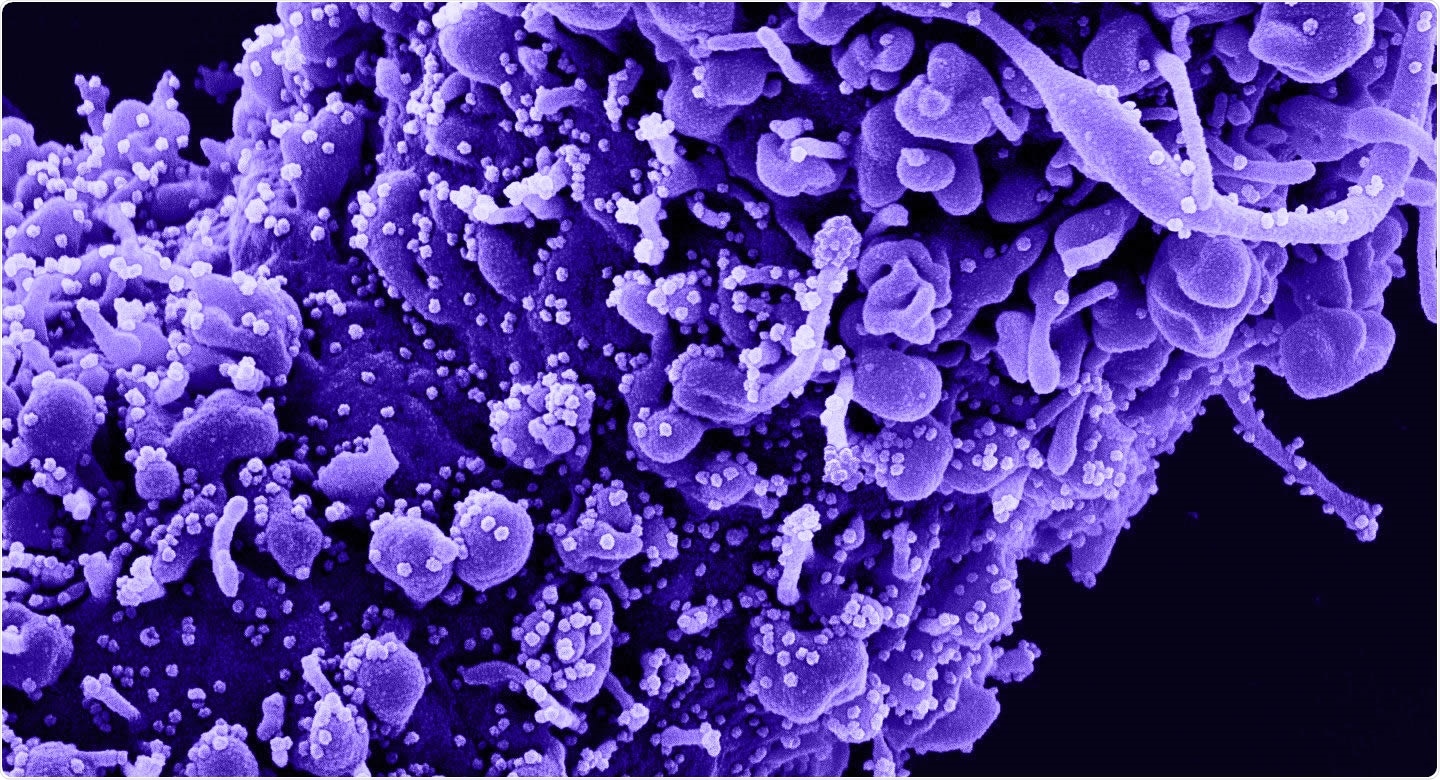The severe acute respiratory syndrome coronavirus 2 (SARS-CoV-2) is a novel coronavirus that first emerged in China in late 2019. Due to the potent and fast spread of the virus, it has now affected 188 countries and territories and has infected more than 20 million people worldwide.
As the coronavirus pandemic evolved, there have been many developments in testing for the SARS-CoV-2 viral load in patients. Now, a team of researchers at the Icahn School of Medicine at Mount Sinai, New York, has found that the SARS-CoV-2 viral load can predict mortality in patients with coronavirus disease (COVID-19).
Published in the journal The Lancet, the study highlights the importance of testing for the fast isolation of cases and contact tracing. At the same time, determining the viral load of patients helps predict the risk of severe disease and death, allowing clinicians to implement more aggressive care.

Severe acute respiratory syndrome coronavirus 2 (SARS-CoV-2) particles.
Determining viral load
SARS-CoV-2 detection platforms currently report qualitative data, but technology-based RT-PCR (Reverse transcription-polymerase chain reaction) allows for the calculation of viral load, which has long been linked to the transmission risk and disease severity in other viral diseases.
Currently, no known studies are evaluating the relationship between viral load and mortality in a large patient cohort. The new study is the first to report on the SARS-CoV-2 viral load at diagnosis as an independent biomarker of the risk of death in a large cohort of hospitalized patients.
The team also noted that viral load in the COVID-19 disease may correlate with infectivity, disease phenotype, morbidity, and mortality.
To arrive at their findings, the researchers assessed nasopharyngeal swab samples for SARS-CoV-2 by real-time RT-PCR. The samples that came out positive were evaluated by a laboratory-developed quantitative RT-PCR test approved for clinical use.
From all the samples collected from March 13 to May 4, 2020, viral loads for symptomatic and admitted COVID-19 patients were measures. The patients with complete survival data, which included if they were discharged or died in the hospital, were included in the data analysis.
What did the findings reveal?
Overall, 1,145 hospitalized patients were evaluated to see their viral loads. The cohort had an average of 64.6 years, and more than 56 percent were males. Further, the average median log viral load was 6.16 viral copies/mL.
After the study period, 807 of the patients survived the infection, while 338 of the patients succumbed to COVID-19. From there, the team performed a Cox proportional hazards model to assess the link between viral load and the risk of death, adjusting common baseline demographic and clinical characteristics of the patients, such as the sex, race, age, asthma, coronary artery disease, chronic kidney disease, atrial fibrillation, chronic obstructive pulmonary disease (COPD), hypertension, stroke, and heart failure.
The researchers discovered that a high viral load was tied to mortality or the risk of death among hospitalized patients with COVID-19.
“Here, we demonstrate a relationship between high viral load and increased mortality in a large hospitalized cohort. A high viral load could signify greater disease severity or a more compromised host, with both scenarios requiring closer clinical monitoring and a high index of suspicion for poor outcome and death,” the team wrote in the paper.
The researchers suggest that though scaling of testing has been performed to contain the spread of the virus, it is challenging to understand and determine who is at risk for worse outcomes early in the infection. It is crucial to determine the risk of death for clinicians and doctors to provide the needed care immediately. This way, the mortality risk among patients will be reduced.
Further, the team recommends that governments across the globe transform frontline qualitative testing into quantitative viral load to help doctors in identifying patients who are at risk of severe illness. This way, they can be admitted to the hospital and closely monitored, versus those patients who may safely recover at home.
“Viral loads may also affect isolation measures based on infectivity. It will also be of great interest to address SARS-CoV-2 viral load dynamics in individual patients and the quantitative relationship with neutralizing antibodies, cytokines, and other covariates,” the team added.
Transforming frontline qualitative testing into a quantitative viral load will assist clinicians in risk-stratifying patients who should be admitted and closely monitored versus those who may safely convalesce at home.
Journal reference:
- Pujadas, E., Chaudhry, F., McBride, R., Richter, F., Zhao, S., et al. (2020). SARS-CoV-2 Viral Load Predicts COVID-19 Mortality. The Lancet. https://www.thelancet.com/journals/lanres/article/PIIS2213-2600(20)30354-4/fulltext